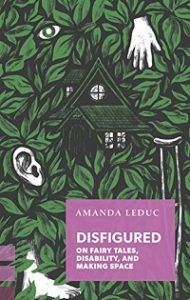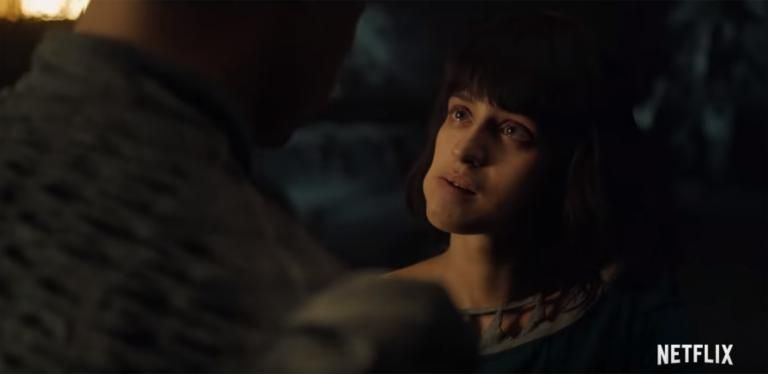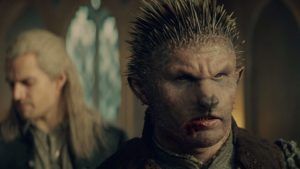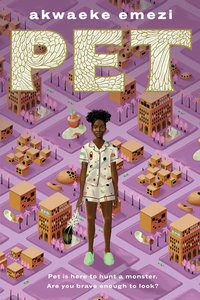Amanda Leduc, author of Disfigured: On Fairy Tales, Disability, and Making Space, posed different possibilities in an interview we had earlier this year: “[W]hat if the Beast doesn’t turn into a handsome prince at the end but has [to] still become kind and gentle? What if the Little Mermaid doesn’t kill herself at the end of the Hans Christian Andersen tale but instead learns sign language and begins to communicate with her prince after all? What happens when we look at the dwarfs in Snow White and give them agency and power?” Fairytales and fantasies (here’s my essay on fantasy and disability) are genres of “What ifs.” The world of fairytale is rife with possibility; anything can happen. Paupers can marry into royalty, brothers can turn into swans, sausages can speak and cook. The status quo and the confines of normalcy can be disrupted in so many delightful ways. “What if” becomes far more powerful than “Once upon a time” or “And they lived happily ever after.” A good “What if” can transform society. That’s why it’s so disappointing there aren’t more modern retellings subverting the disability tropes utilized in the originals. One exception I can think of is Girl, Serpent, Thorn by Melissa Bashardoust, coming out in May.
Disability Representation In Fairytales
In Disfigured: On Fairy Tales, Disability, and Making Space, Amanda Leduc describes her life with cerebral palsy and her obsession with fairytales that began at an early age and continues today. She entwines this memoir with disability critical theory and analysis of fairytales. It gave me goosebumps as I read, to see so many of my unexpressed, half-formed thoughts in print. My highlighter got a good workout. I should add here that while I’m disabled, mine is an invisible disability, and doesn’t affect my daily life as much as Amanda’s or many disabled people’s. But I still connected to the ways Amanda describes of being both drawn to and repulsed by fairytales. Of aching for those happily ever afters and slowly realizing how problematic those endings are. If I were featured in a classic fairytale, I’d be the fainting woman. Maybe I’m pursued by an evil stepmother, but because I’m good and kind to a probably disabled witch, I’m given a vial of magical water to cure all ills. Except my evil stepmother steals the water and places it at the top of several flights of stairs. What am I to do?! I undergo a series of tasks to rescue a prince who will hopefully climb the stairs for me and bring me the magical water, but I promptly faint before I can give him the instructions. He forgets me—leaves me lying among leaves and thorns—until reminded by the same witch he meets in the woods hunting one day that hey, you should really go collect that girl who saved your life and then make her drink the magic water at the top of those stairs. He finds me with the help of some talking animals he had previously decided not to murder and then carries my limp body up the stairs and forces the water down my throat. I awaken, we marry, I never faint again. Happily ever after. Except… I’d rather the witch have magicked an escalator so I could claim the magical water and save myself. “[S]urely Cinderella’s fairy godmother could just as easily have used her magic to overturn the social order!” Amanda says in her interview. And if that was impossible to imagine in the 18th and 19th centuries, surely it’s possible to imagine now (and in fact, Cinderella Liberator by Rebecca Solnit imagines just that, though without a disability narrative included). “[W]hen you put the disability front and centre in a way that doesn’t stem from pity,” Amanda argues, “the world of the story has to change. It’s inevitable—and so exciting.”
Disability In The Witcher
I felt that excitement when Yennefer first appeared onscreen in The Witcher series on Netflix, based on the popular fantasy novel series. A sexy disabled woman on screen, with such powerful magic! She had so much opportunity to change this pseudomedieval world, to transform her society’s idolization of beauty and power. And then she doesn’t. And then, instead of flexing all that magical muscle and anger and personality, she becomes beautiful like the rest of the women magic users (the men seem not to require this beauty to be part of the magical clique, and don’t all we women know it). “But” argued a member of a book group I’m in, “she regrets her choice for the rest of her life. Doesn’t that make a difference? Doesn’t that break the mold?” Yes and no. Yes, I’m glad to see Yennefer’s nuances and I still genuinely enjoy her as a character, but how much more amazing would it have been to see her kick magical ass as a disabled sorceress? (Please read this excellent article on Yennefer’s disability and its connections with motherhood.) It’s an image disabled folk long to see in their fairytales. The day when their existence can have a happily ever after without being erased. “Why, in all these stories about someone who wants to become and be something or someone else, was it always the individual who needed to change, and never the world?” asks Amanda in Disfigured.
The Witcher comes closer to having positive disability representation in episode 4, “Of Banquets, Bastards, and Burials,” which retells the fairytale “Hans my Hedgehog.” While the episode follows the Grimms’ fairytale in many ways, it also deviates in key plot elements, and these deviations promote agency in disability narratives, somewhat. In the episode, Queen Calanthe throws a party for Princess Pavetta in order to find her an acceptable husband. In the short story from The Last Wish, Queen Calanthe invites Geralt, the Witcher, to the party to dispose of a certain suitor she finds distasteful. In the Netflix series, Geralt comes to the party as a favor to his friend. This distasteful suitor turns out to be a man cursed to look like a hedgehog, Duny of Erlenwald. Duny once saved the now-dead King’s life, and in return, he was promised the law of surprise—the first surprise to greet the king on his return home. This prize turns out to be the newly born Princess Pavetta, who he has now come to claim. What sounds like a distasteful and sexist storyline takes a step forward in both disability representation and women’s choice from here, for Princess Pavetta has already fallen in love with Duny the hedgehog and finds him sexually attractive, as her pregnancy at the end of the episode combined with their passionate kiss indicates. In the Grimms’ fairytale, the princess who marries Hans the hedgehog is coerced into the marriage out of fear for her life. Hans first tried to marry another princess, and when she expressed she didn’t want to marry him, he “struck her with his quills until she was covered in blood.” She lived the rest of her life in disgrace. Clearly, The Witcher’s retelling of the fairytale is more progressive than the original. But then the show (and the short story) takes a step back and transforms Duny into a handsome prince (who would’ve been soooo much older than Pavetta too). Did Duny, like in the fairytale, really need to be transformed back into human form? After all, Pavetta loves him as is. In fact, maybe she prefers hedgehogs. Once again, disability serves as a metaphor, a needless one in this case. The fact is, it’s hard for many nondisabled folks to imagine—if they think about it at all—that if a disabled person had magical powers, or the opportunity to make a wish, they wouldn’t magic away their disability. In Disfigured, Amanda explains that disability becomes a symbol in fairytales. Less a reality and more of a manifestation of bad things turning into happily ever afters. If disability “is a symbol of something else, then once that symbol is realized, the disability can go away.” Thus, a hedgehog becomes a human, the Little Mermaid becomes a bird to attain her soul, the beast turns into a handsome prince. Evil characters become disabled, if they weren’t already, to fulfill the symbolism of the fairytale, like when Cinderella’s stepsisters have their eyes gouged out by birds in the Brother Grimms’ version. If you’re not a hero/heroine cursed with a disability that will be magicked away, then you’re an evil disabled person.
Disability in Pet
This is something I loved about Pet by Akwaeke Emezi. In Pet, a monster climbs out of a painting—or is he really a monster? Jam’s parents call him such, but Pet—the name he’s chosen—clearly recoils from the term. Pet is disfigured in appearance: eyeless, giant, with Jam’s mother’s hands. He’s come to Jam’s utopian town of Lucille to hunt a monster, though Jam has been taught monsters no longer exist, and if there were monsters, surely they would look like Pet. Not like normal people. While fairytales aren’t mentioned in the novel (Akwaeke uses angel vs. demon mythology), it’s clear that Jam has bought into the idea that villains are disfigured. But unlike in fairytales, in the real world evil often wears a normal face. Jam is aware that once, society would’ve deemed her as monstrous for her trans identity. But that’s far in the past. At one point in the novel, Pet admonishes Jam: “Here to banish me, little girl…Here to erase me…Here to push me into the black, away from the eyes. I am too loud, too saying loud things, too looking loud.” I think of this with Amanda’s memoir and her discussion of how people react to her physical disability—as if her mere presence were too loud so she must be erased from the eyes as people look away. Of Yennefer, too, how, as a disabled sorceress, she was too loud, too noncompliant. Transformed into a beautiful nondisabled woman, her power is lessened, is made submissive to patriarchal normativity. She is erased, and it is that far more than her womb that she sacrificed to become beautiful. The power of noncompliance, a trait Pet yields quite effectively.
True Transformation
“Fairy tales have often been a way for people to conceptualize and deal with this harsh unfairness of the world,” Amanda told me. “[W]e take the untidy nature of life and squish it into the tidy narrative of story as a way of making sense of the world and holding on to hope…and to the idea that transformation is possible. The difference is that fairy tales talk about individual change, and we need to hold onto them now as a way of pushing social change forward. It isn’t enough for individuals to transform anymore—we need to transform the world.” So let’s give the Little Mermaid her voice back through sign language; let the beast and the hedgehog remain themselves and be beautiful because of it; let the maiden without hands use prosthetics (and in fact she does for a time); let Yennefer force the world into accepting her disabled body; show that evil does not always wear a disabled face (though it can). Let the fairy godmother wave her wand and make it so that communities and societies remove barriers of entry rather than create them.



